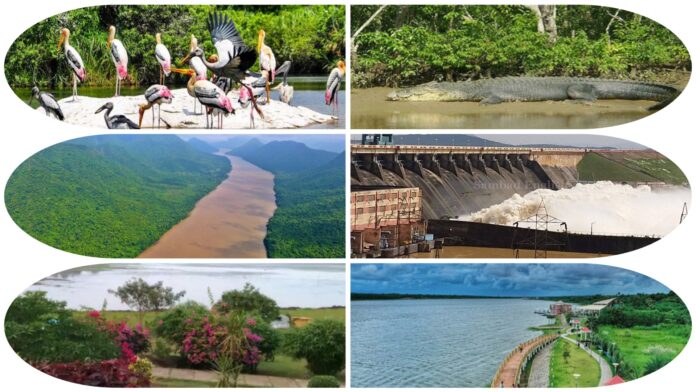[ad_1]
Wetlands play a crucial role in maintaining many natural cycles and support a wide range of biodiversity. They serve as natural buffer against flooding and droughts. Besides, wetlands protect our coastlines and help fight climate change.
Wetlands are important features in the landscape benefitting human beings, aquatic life and wildlife.
What is Ramsar Site?
A Ramsar site is a wetland designated to be of international importance under Ramsar Convention, an intergovernmental environmental treaty established by the UNESCO in 1971. The treaty came into force in 1975.
The primary goal of Ramsar tag is to conserve a wetland for sustainable use. Countries that are parties to Ramsar Convention can nominate wetland sites within their territories for inclusion in the list of wetlands of international importance.
India signed the intergovernmental treaty in 1982.
Ramsar sites in India
India is home altogether 80 Ramsar sites. Wular lake in Jammu and Kashmir, Ropar wetland in Punjab, Sambhar lake in Rajasthan, Upper Ganga River in Uttar Pradesh, Sundarban wetland in West Bengal, Thol Lake Wildlife Sanctuary in Gujarat, Lonar lake in Maharashtra, Chilika lake in Odisha, Kolleru lake in Andhra Pradesh, Sasthamkotta lake in Kerala, Pichavaram mangrove in Tamil Nadu and Ranganathituu BS in Karnataka are some of the well-known Ramsar sites in India.
Among the states, Tamil Nadu has 14 Ramsar sites, Uttar Pradesh has 10 and both Odisha and Punjab have six Ramsar sites each.
Ramsar sites in Odisha
Odisha is home to six Ramsar sites. Chilika lake, Bhitarkanika mangroves, Satkosia gorge, Hirakud reservoir, Ansupa lake and Tampara lake in the state have received the coveted tag.
Chilika lake
Chilika lake had been recognized as the first Ramsar site in India along with Keoladeo National Park of Rajasthan. The lagoon, spread over three districts—Puri, Khorda and Ganjam—attracts over a million migratory birds during the winter.
Birds from far-flung places like Caspian sea, Lake Baikal, Aral sea, Central and South East Asia, Ladakh and Himalayas congregate in Chilika in the winter. The lagoon is well-known for its dolphin population. More than 2 lakh fishermen from the nearby villages depend upon Chilika for their livelihood.
Bhitarkanika Mangroves

Bhitarkanika mangroves in Kendrapara district of Odisha are well-known for saltwater crocodiles. It is the second largest mangrove ecosystem in India after the Sundarbans of West Bengal. The Bhitarkanika National Park is home to India python, king cobra, spotted deer, sambar, wild boar and jungle cat. Besides, the wetland hosts resident as well as migratory birds.
Satkosia Gorge

Satkosia gorge, extending across Angul, Cuttack, Nayagarh and Boudh districts in Odisha is India’s second largest sanctuary along the Mahanadi river. It preserves biodiversity including some endangered species like gharial and provides ecosystem services such as fishing, groundwater recharge, climate regulation and flood protection. The water body attracts various types of birds in the winter.
Hirakud Reservoir

Hirakud reservoir in Sambalpur district is located close to Debrigarh wildlife sanctuary. It is home to rare resident and migratory birds including ducks, geese and waders. The local fishermen depend upon the reservoir for their livelihood.
Ansupa Lake

Ansupa lake, located in Cuttack district, is the largest freshwater wetland in Odisha. The lake sustains local livelihoods through fishing and agriculture. It also serves as a hotspot for migratory birds, offering both scenic beauty and tourism potential.
Tampara Lake

Tampara is a freshwater wetland in Odisha’s Ganjam district, formed from a depression near Rushikulya in 1766. Local fishermen depend upon the lake for livelihood. Besides, the lake serves as a tourism and recreation spot.
[This story is a part of ‘Punascha Pruthibi – One Earth. Unite for It’, an awareness campaign by Sambad Digital.]
[ad_2]

